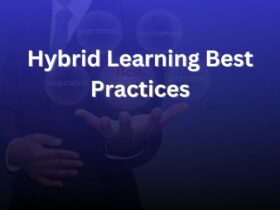Annotation is a strategic layer in your ML workflow, not just a starting point. A disconnected process slows down iteration, leads to mislabeled data, and makes it harder to track what went into each model version.
Integrating a data annotation platform (whether it’s for images, video, or text) helps you automate the flow, maintain quality, and create useful feedback loops. Done right, it saves time, reduces rework, and helps your models learn faster.
Why Integration Matters to Your ML Workflow
Integrating your annotation tool with your machine learning workflow speeds up your team and reduces errors. Without this connection, things slow down and models don’t learn as well.
Bottlenecks You Might Be Ignoring
Many teams handle annotation as a one-time task. Data gets labeled, saved, and passed off manually. This method can get you started, but it doesn’t adapt to growth. What slows things down:
- Moving files by hand
- Formats that don’t match across tools
- No way to track label changes
- Waiting for updates between teams
These small issues cause bigger problems over time.
What Good Integration Solves
Linking your tools together enhances your ability to direct and optimize your workflow. You can track what was labeled, when it was done, and by whom, and see how those labels impacted your model. When tools are integrated and communicate with each other, you benefit from automatic data syncing, clear version history for labels, easier model debugging, and fewer errors across teams.
This works for any type of annotation: image, video, or text. Using a data annotation platform with full integration capabilities can make your full pipeline more reliable.
Feedback Loops Improve the Right Data
You don’t need more data, you need better data. With the right setup, your model can flag weak predictions, send that data back for relabeling, and keep annotators focused only on the most important examples. As a result, your model learns faster and more efficiently. This feedback loop saves both time and budget while helping the model improve by learning from its own mistakes.
Common Challenges When Connecting Annotation Tools
Even with the right tools, connecting your annotation platform to your ML workflow isn’t always smooth. Here are some problems teams run into and how to avoid them.
Mismatched Formats and Tools
One of the most common problems: tools don’t speak the same language. Your model expects data in one format, but your annotation tool gives you another.
What to watch for:
- Output formats like COCO, Pascal VOC, or custom JSON
- Different settings for image, video, or text data
- Extra steps to convert or clean data before use
Choose a platform that supports your format or lets you export in multiple ones without extra work.
No Version Control
If you can’t track your labels, you can’t trust your model. Problems this causes:
- Labels change over time, but there’s no record
- Multiple versions of the same dataset are used across teams
- You can’t trace bugs in the model back to the data
To fix this, set up clear versioning for datasets, annotation batches, and model outputs. Tools like DVC, Weights & Biases, or even Git for data folders can help.
Inconsistent Label Quality
Bad labels can slow your model down or push it in the wrong direction. This often happens when too many annotators work without a proper review system, guidelines are unclear or inconsistently applied, and edge cases are either missed or handled differently each time.
Solutions that help:
- Use review stages or consensus tools in your annotation platform
- Keep instructions short and specific
- Regularly sample labels for manual checks
Whether you’re using an image annotation platform or a video annotation platform, label quality matters.
Choosing the Right Annotation Platform for Integration
Not all annotation tools work well with your ML setup. Choosing the right option from the start saves time and avoids messy fixes down the road.
Core Features to Look For
Before choosing a tool, make sure it covers the basics:
- API access to push and pull data automatically
- Pre-labeling support so you can send model predictions for review
- Review layers to check work before it reaches the model
- Flexible exports for formats your training code understands
- Multi-type support if you work with image, video, or text data
If your pipeline is growing, or if you need to scale labeling across teams, these features aren’t optional.
How to Test Fit with Your Workflow
You don’t need a perfect tool. You need one that fits your process.
Questions to ask:
- Can it connect to your current storage (cloud buckets, local, etc.)?
- Does it support batch uploads and large datasets?
- Can you use your own models to generate labels?
- How easy is it to automate updates or track progress?
An AI data annotation platform that integrates smoothly with your infrastructure gives you more control and fewer manual steps.
Step-by-Step: How to Integrate an Annotation Platform
Integration doesn’t have to be complex. Break it down into clear steps and focus on connecting the right parts of your ML workflow.
Map Your ML Workflow
Begin by mapping out your current ML pipeline. Understand where your raw data comes from, when and how it’s labeled, where training, validation, and testing take place, and how often your models retrain or update. This clarity helps you identify exactly where annotation fits in—and where it might be creating bottlenecks.
Automate Data Flow
Don’t move files by hand. Use scripts or pipeline tools to connect stages. Here’s what to automate:
- Push raw data to your annotation platform
- Pull labeled data once annotation is complete
- Log each dataset version before training
Even basic automation saves hours and reduces mistakes.
Create Feedback Loops
Your model can actively support the annotation process by using its prediction results to guide what gets labeled next. It can flag low-confidence outputs for relabeling, pre-fill labels so humans only need to review and adjust, and prioritize edge cases or underrepresented classes. A strong annotation platform enables model-in-the-loop labeling, making it easy to feed model outputs back into the labeling queue with minimal friction.
Track Everything
Keep logs of:
- What was labeled
- When and by whom
- Which version of labels was used in training
This helps you debug faster and explain model behavior when things go wrong.
Final Thoughts
A well-integrated annotation platform helps ensure your ML workflow is consistent, dependable, and ready to scale. When annotation, model training, and feedback are connected, your team can focus on improving performance, not fixing broken steps.
Whether you’re using an AI data annotation platform for images, video, or text, the goal is the same: clean, consistent, and usable data that keeps your models improving with less effort.













































Leave a Reply